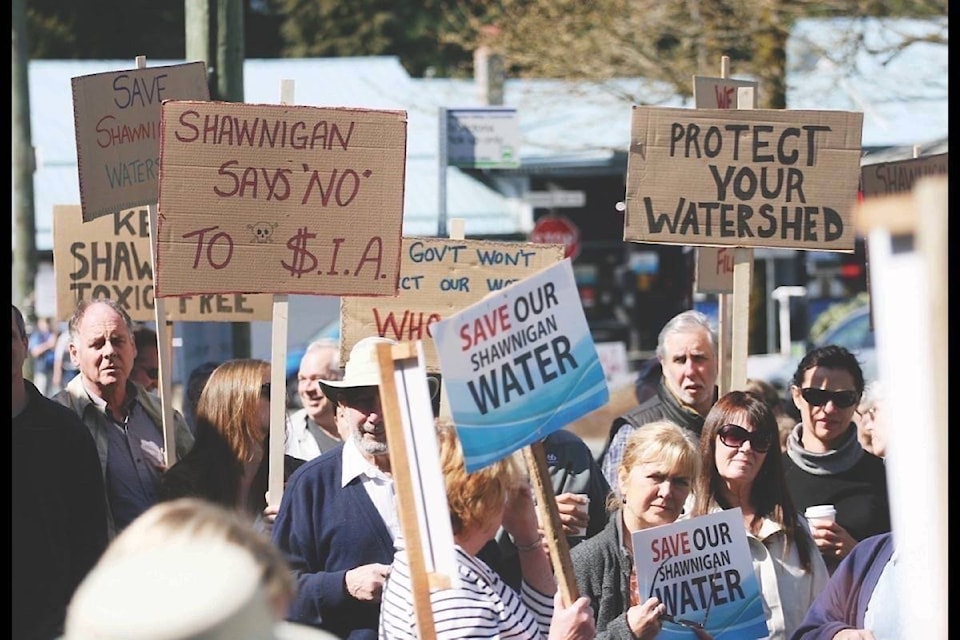The province announced Wednesday afternoon that it was beginning the procedure to take over the controversial contaminated soil site at Shawnigan Lake due to non-payment of taxes on the part of the owner, Cobble Hill Holdings.
The forfeiture proceedings do not impact the closure plan for the landfill site, the province said in a press release from the Ministry of Environment and Climate Change Strategy. It also does not affect the Spill Prevention Order.
The site has been under litigation for years. Site owners Cobble Hill Holdings and South Island Aggregates were issued a permit by the provincial government in 2013 to receive and store up to 100,000 tonnes of contaminated soil per year at their quarry. This drew the ire of the Shawnigan Lake community, which argued that the location above the Shawnigan watershed was innapropriate for contaminated soil, as the possibility of contaminants leaking into the water was too high.
After legal wrangling the site was ordered shut down in 2017, when the operating permit was pulled. Closure plans call for the contaminated soil already there to stay at the site. Opponents have turned their sights to demanding its removal.
In the Wednesday press release the province said despite the forfeiture proceedings the parties named on the spill prevention order remain responsible for implementing the closure plan.
Cowichan Valley MLA, and longtime opponent of the contaminated soil site in Shawnigan, Sonia Furstenau was unimpressed.
“This is yet another example that demonstrates how the Ministry of Environment needs greater powers within the Environmental Management Act. Government must consider the history of operators when making these sorts of decisions, akin to the fit and proper clause used in other acts.
“We keep coming back to the same place — government is forced to take increased risks and costs because it simply doesn’t have the power to act decisively to protect a community’s drinking water,” she said.
“Ensuring the protection of clean, accessible, and healthy drinking water should be the first priority when development is proposed in a watershed. And yet the current approach shows that we seem to have our priorities backwards. Why would a community have confidence that a Spill Prevention Order or a closure plan would be followed through to the letter if a basic step like paying property taxes cannot be fulfilled?” she asked.
The ministry press release said that to date, the named parties have followed the plan and its approval conditions:
• Two new shallow monitoring wells and a new seepage blanket well were installed Nov. 4 and Nov. 6, 2019, in advance of the Nov. 18 deadline.
• The objective of those installations is to improve the groundwater monitoring network next to the landfill.
• The comprehensive pre-winter inspection under the supervision of a qualified professional was completed on Nov. 12 in advance of the Nov. 18 deadline. No upgrades or maintenance were found to be required.
• The named parties have submitted the draft quality management plan, the pre-winter inspection report and the slope stability report. The ministry is reviewing these documents.



